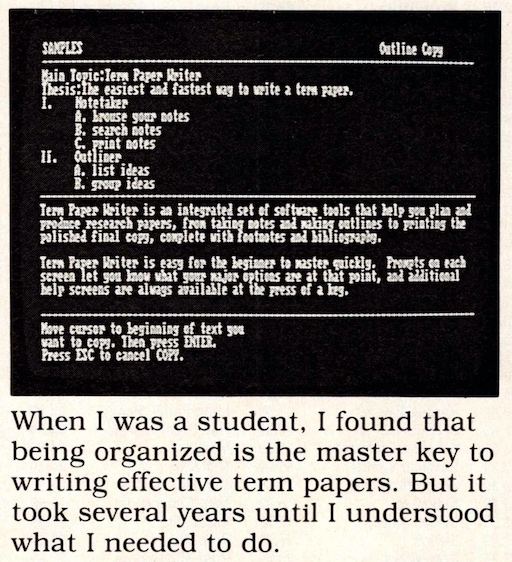Life Advice From 1980’s Computer Magazines
February 8, 2021 Filed under Advice, Amused, Inspiration
30 years ago I saw this advice in the computing magazine that was delivered to our house each month:
I was already familiar with the game, and I knew it was right: When you’re playing Moebius: The Orb of Celestial Harmony and you enter a fortress, the guards are easier to fight hand-to-hand.
I was intrigued by the counterintuitive feel of the advice. If you have a long sharp sword, and you’re good with it, wouldn’t that always be the best choice? Then I imagined trying to swing a sword in a narrow hallway. Perhaps something more intimate, and easier to control, was right after all.
For years after I read that silly, unremarkable sentence in that gaming magazine, it bubbled up randomly in different situations. I generalized the idea: When you enter a confined space, don’t waste effort trying to keep everything at arm’s length — especially people. Switch to something more intimate even if it’s less powerful. The trick is recognizing when you need to switch modes.
Recently I got ahold of a bunch of ancient issues of a defunct magazine called Family Computing, and fed them into a sheet-fed automatic scanner. Flicking through the pages, I found more pieces of worthy life advice. May they guide you on your journeys!
Very important to know when you’re a young person at a party, or when some jerk decides to pick on you!


















